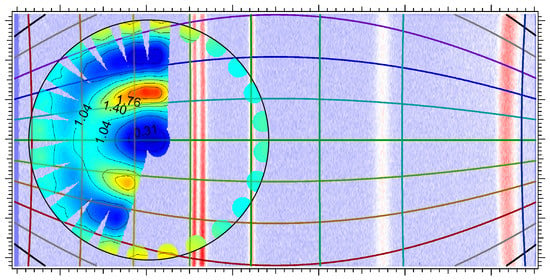Multiple Wavelengths Texture Measurement Using Angle Dispersive Neutron Diffraction at WOMBAT
Abstract
:1. Introduction
2. Experimental Procedures
2.1. Investigated Steel
2.2. Experimental Setup for Neutron Diffraction Texture Measurements
2.3. Data Conversion from 2D Image Data to Divided 1D Neutron Diffractograms
2.4. Rietveld Texture Analysis with MAUD
3. Results and Discussion
3.1. Bulk Texture Evaluation Using WOMBAT Neutron Diffraction
3.2. High Resolution Texture Reliability from Different Neutron Diffractometers
4. Conclusions
Author Contributions
Funding
Data Availability Statement
Acknowledgments
Conflicts of Interest
References
- Bunge, H. Textures in Ceramics. Textures Microstruct. 1995, 24, 1–12. [Google Scholar] [CrossRef] [Green Version]
- Brockhouse, B.N. The initial magnetization of nickel under tension. Can. J. Phys. 1953, 31, 339–355. [Google Scholar] [CrossRef]
- Holden, T.M. The First Two Decades of Neutron Scattering at the Chalk River Laboratories. Quantum Beam Sci. 2021, 5, 3. [Google Scholar] [CrossRef]
- Bunge, H. Textures in Multiphase Alloys. Z. Met. 1985, 76, 92–101. [Google Scholar]
- Schäfer, W.; Merz, P.; Jansen, E.; Will, G. Neutron Diffraction Texture Analysis of Multiphase and Low-Symmetry Materials Using the Position-Sensitive Detector Julios and Peak Deconvolution Methods. Textures Microstruct. 1991, 14, 65–71. [Google Scholar] [CrossRef] [Green Version]
- Lazik, S.; Esling, C. Textures in Multiphase Materials: A Review. Textures Microstruct. 1993, 22, 1–15. [Google Scholar] [CrossRef] [Green Version]
- Wang, Y.-D.; Tian, H.; Stoica, A.D.; Wang, X.-L.; Liaw, P.K.; Richardson, J.W. The development of grain-orientation-dependent residual stresses in a cyclically deformed alloy. Nat. Mater. 2003, 2, 101–106. [Google Scholar] [CrossRef] [PubMed]
- Wenk, H.-R.; Houtte, P.V. Texture and anisotropy. Rep. Prog. Phys. 2004, 67, 1367–1428. [Google Scholar] [CrossRef]
- Onuki, Y.; Sato, S. In Situ Observation for Deformation-Induced Martensite Transformation during Tensile Deformation of SUS 304 Stainless Steel by Using Neutron Diffraction PART II: Transformation and Texture Formation Mechanisms. Quantum Beam Sci. 2021, 5, 6. [Google Scholar] [CrossRef]
- Wenk, H.-R.; Huensche, I.; Kestens, L. In-Situ Observation of Texture Changes during Phase Transformations in Ultra-Low-Carbon Steel. Metall. Mater. Trans. A 2007, 38, 261–267. [Google Scholar] [CrossRef]
- Xu, P.G.; Tomota, Y.; Vogel, S.C.; Suzuki, T.; Yonemura, M.; Kamiyama, T. Transformation strain and texture evolution during diffusional phase transformation of low alloy steels studied by neutron diffraction. Rev. Adv. Mater. Sci. 2013, 33, 389–395. [Google Scholar]
- Tomida, T.; Wakita, M.; Yasuyama, M.; Sugaya, S.; Tomota, Y.; Vogel, S.C. Memory effects of transformation textures in steel and its prediction by the double Kurdjumov–Sachs relation. Acta Mater. 2013, 61, 2828–2839. [Google Scholar] [CrossRef]
- Chateigner, D.; Ouladdiaf, B.; Léon, F. Magnetic Quantitative Texture Analysis Using Isotropic Thermal Neutron Beams. Solid State Phenom. 2010, 160, 75–82. [Google Scholar] [CrossRef]
- Liss, K.-D.; Bartels, A.; Schreyer, A.; Clemens, H. High-energy X-rays: A tool for advanced bulk investigations in materials science and physics. Textures Microstruct. 2003, 35, 219–252. [Google Scholar] [CrossRef]
- Hielscher, R.; Schaeben, H. A novel pole figure inversion method: Specification of the MTEX algorithm. J. Appl. Crystallogr. 2008, 41, 1024–1037. [Google Scholar] [CrossRef]
- Lutterotti, L. Total pattern fitting for the combined size–strain–stress–texture determination in thin film diffraction. Nucl. Instrum. Methods Phys. Res. Sect. B Beam Interact. Mater. At. 2010, 268, 334–340. [Google Scholar] [CrossRef]
- Wassermann, G.; Grewen, J. Texturen Metallischer Werkstoffe; Springer: Berlin/Heidelberg, Germany, 1962; ISBN 978-3-662-13128-2. [Google Scholar]
- Bunge, H.-J. (Ed.) Mathematische Methoden der Texturanalyse; Akademie-Verlag: New York, NY, USA, 1969. [Google Scholar]
- Kunze, K.; Schaeben, H. The Bingham Distribution of Quaternions and Its Spherical Radon Transform in Texture Analysis. Math. Geol. 2004, 36, 917–943. [Google Scholar] [CrossRef]
- Hielscher, R.; Mainprice, D.; Schaeben, H. Material Behavior: Texture and Anisotropy. In Handbook of Geomathematics; Freeden, W., Nashed, M.Z., Sonar, T., Eds.; Springer: Berlin/Heidelberg, Germany, 2014; pp. 1–36. ISBN 978-3-642-27793-1. [Google Scholar]
- McIntyre, G.J.; Holden, P.J. Neutron scattering at the OPAL research reactor. J. Phys. Conf. Ser. 2016, 746, 012001. [Google Scholar] [CrossRef] [Green Version]
- Nakajima, K.; Kawakita, Y.; Itoh, S.; Abe, J.; Aizawa, K.; Aoki, H.; Endo, H.; Fujita, M.; Funakoshi, K.; Gong, W.; et al. Materials and Life Science Experimental Facility (MLF) at the Japan Proton Accelerator Research Complex II: Neutron Scattering Instruments. Quantum Beam Sci. 2017, 1, 9. [Google Scholar] [CrossRef] [Green Version]
- Xu, P.G.; Akita, K.; Suzuki, H.; Metoki, N.; Moriai, A. Establishment and Optimization of Angle Dispersive Neutron Diffraction Bulk Texture Measurement Environments. Mater. Trans. 2012, 53, 1831–1836. [Google Scholar] [CrossRef] [Green Version]
- Li, M.J.; Liu, Y.T.; Liu, X.L.; Tian, G.F.; Chen, D.F. Neutron Texture Diffractometer at China Advanced Research Reactor. Mater. Sci. Forum 2014, 777, 71–77. [Google Scholar] [CrossRef] [Green Version]
- Xu, P.G.; Tomota, Y.; Suzuki, H.; Suzuki, T.; Machiya, S.; Yin, F.X. Bulk Texture Measurement of Interstitial-Free Annealed Steel Using Gaussian Integrated Intensities of Neutron Diffraction Spectra. Mater. Trans. 2008, 49, 2033–2039. [Google Scholar] [CrossRef]
- Bunge, H.J.; Wenk, H.R.; Pannetier, J. Neutron Diffraction Texture Analysis Using a 2θ-Position Sensitive Detector. Textures Microstruct. 1982, 5, 153–170. [Google Scholar] [CrossRef] [Green Version]
- Juul Jensen, D.; Kjems, J.K. Apparatus for Dynamical Texture Measurements by Neutron Diffraction Using a Position Sensitive- Detector. Textures Microstruct. 1983, 5, 239–251. [Google Scholar] [CrossRef] [Green Version]
- Zhang, J.; Kisi, E.H.; Kirstein, O. Quantitative neutron diffraction texture measurement applied to α-phase alumina and Ti3AlC2. J. Appl. Crystallogr. 2011, 44, 1062–1070. [Google Scholar] [CrossRef]
- Brokmeier, H.-G.; Gan, W.M.; Randau, C.; Völler, M.; Rebelo-Kornmeier, J.; Hofmann, M. Texture analysis at neutron diffractometer STRESS-SPEC. Nucl. Instrum. Methods Phys. Res. Sect. Accel. Spectrometers Detect. Assoc. Equip. 2011, 642, 87–92. [Google Scholar] [CrossRef] [Green Version]
- Wenk, H.-R.; Lutterotti, L.; Vogel, S. Texture analysis with the new HIPPO TOF diffractometer. Nucl. Instrum. Methods Phys. Res. Sect. Accel. Spectrometers Detect. Assoc. Equip. 2003, 515, 575–588. [Google Scholar] [CrossRef]
- Xu, P.G.; Harjo, S.; Ojima, M.; Suzuki, H.; Ito, T.; Gong, W.; Vogel, S.C.; Inoue, J.; Tomota, Y.; Aizawa, K.; et al. High stereographic resolution texture and residual stress evaluation using time-of-flight neutron diffraction. J. Appl. Crystallogr. 2018, 51, 746–760. [Google Scholar] [CrossRef]
- Xu, P.G.; Harjo, S.; Akita, K.; Hoshikawa, A.; Ishigaki, T.; Hayashi, M.; Minemura, T. Reliability of rapid bulk texture measurement using iMATERIA time-of flight neutron diffractometer. CAMP-ISIJ 2015, 28, 242. [Google Scholar]
- Xu, P.G.; Ikeda, Y.; Hakoyama, T.; Takamura, M.; Otake, Y.; Suzuki, H. In-house texture measurement using a compact neutron source. J. Appl. Crystallogr. 2020, 53, 444–454. [Google Scholar] [CrossRef] [Green Version]
- Léon, F.; Chateigner, D.; Ouladdiaf, B.; Richard, D. Quantitative texture analysis on D19 using the new 120° curved area PSD. In 2006 Annual Report; Institut Laue Langevin: Grenoble, France, 2006; pp. 92–93. [Google Scholar]
- Garbe, U.; Kirstein, O.; Studer, A.; Luzin, V.; Liss, K.D. Texture and Strain Experiments at OPAL. Mater. Sci. Forum 2010, 638–642, 2823–2828. [Google Scholar] [CrossRef]
- Studer, A.J.; Hagen, M.E.; Noakes, T.J. Wombat: The high-intensity powder diffractometer at the OPAL reactor. Phys. B Condens. Matter 2006, 385–386 Pt 2, 1013–1015. [Google Scholar] [CrossRef]
- Elcombe, M. Neutron Scattering at HIFAR—Glimpses of the Past. Quantum Beam Sci. 2017, 1, 5. [Google Scholar] [CrossRef] [Green Version]
- Simons, H.; Daniels, J.E.; Studer, A.J.; Jones, J.L.; Hoffman, M. Measurement and analysis of field-induced crystallographic texture using curved position-sensitive diffraction detectors. J. Electroceram. 2014, 32, 283–291. [Google Scholar] [CrossRef]
- Liss, K.-D.; Hunter, B.; Hagen, M.; Noakes, T.; Kennedy, S. Echidna—The new high-resolution powder diffractometer being built at OPAL. Phys. B Condens. Matter 2006, 385–386, 1010–1012. [Google Scholar] [CrossRef]
- Könnecke, M.; Akeroyd, F.A.; Bernstein, H.J.; Brewster, A.S.; Campbell, S.I.; Clausen, B.; Cottrell, S.; Hoffmann, J.U.; Jemian, P.R.; Männicke, D.; et al. The NeXus data format. J. Appl. Crystallogr. 2015, 48, 301–305. [Google Scholar] [CrossRef] [PubMed] [Green Version]
- Busing, W.R.; Levy, H.A. Angle calculations for 3- and 4-circle X-ray and neutron diffractometers. Acta Crystallogr. 1967, 22, 457–464. [Google Scholar] [CrossRef]
- Ahmed, F.U.; Tanaka, I.; Niimura, N. Performance of a multi-wavelength monochromator system for neutron single-crystal and powder diffraction. J. Appl. Crystallogr. 2000, 33, 291–295. [Google Scholar] [CrossRef] [Green Version]
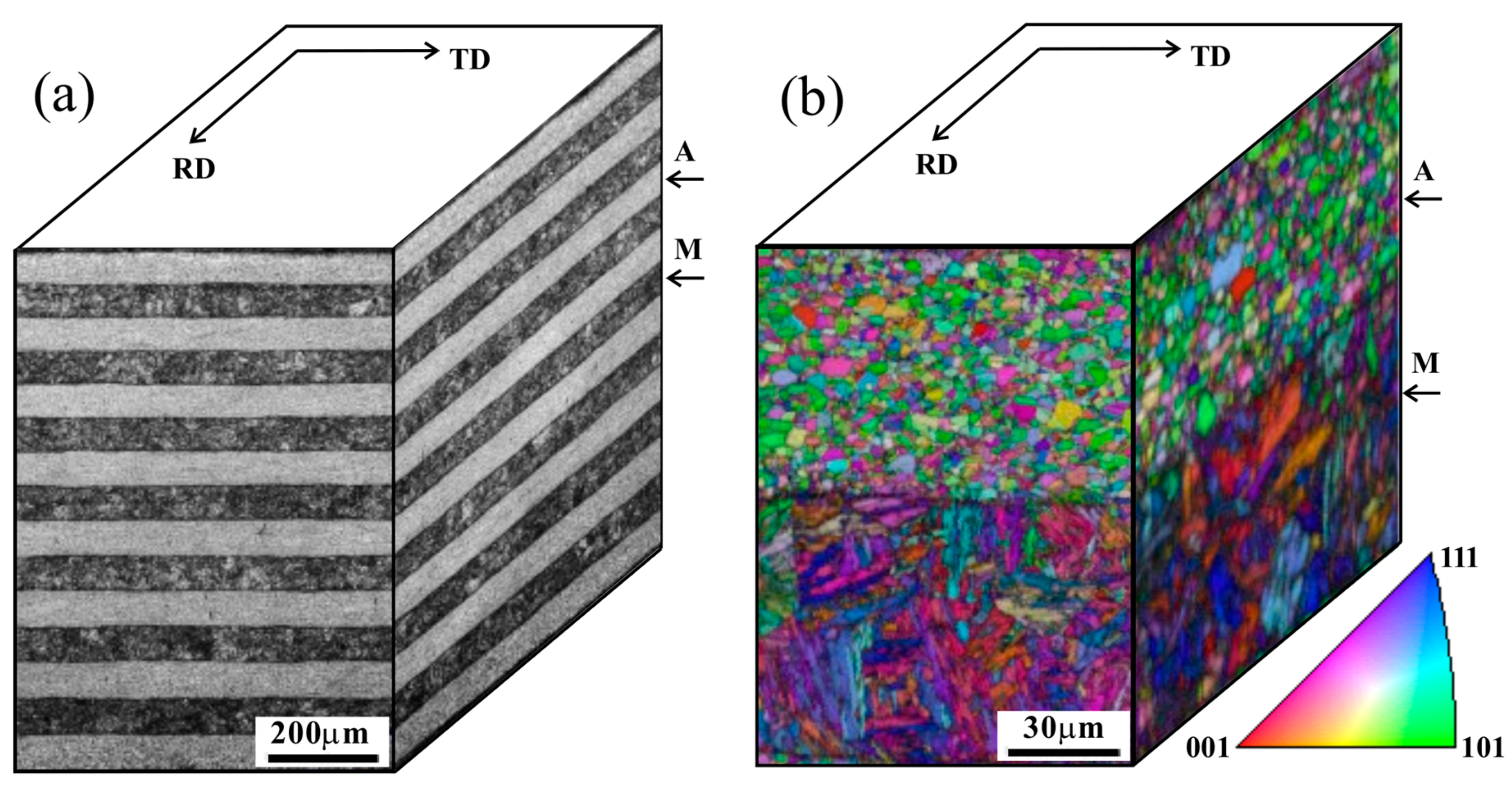


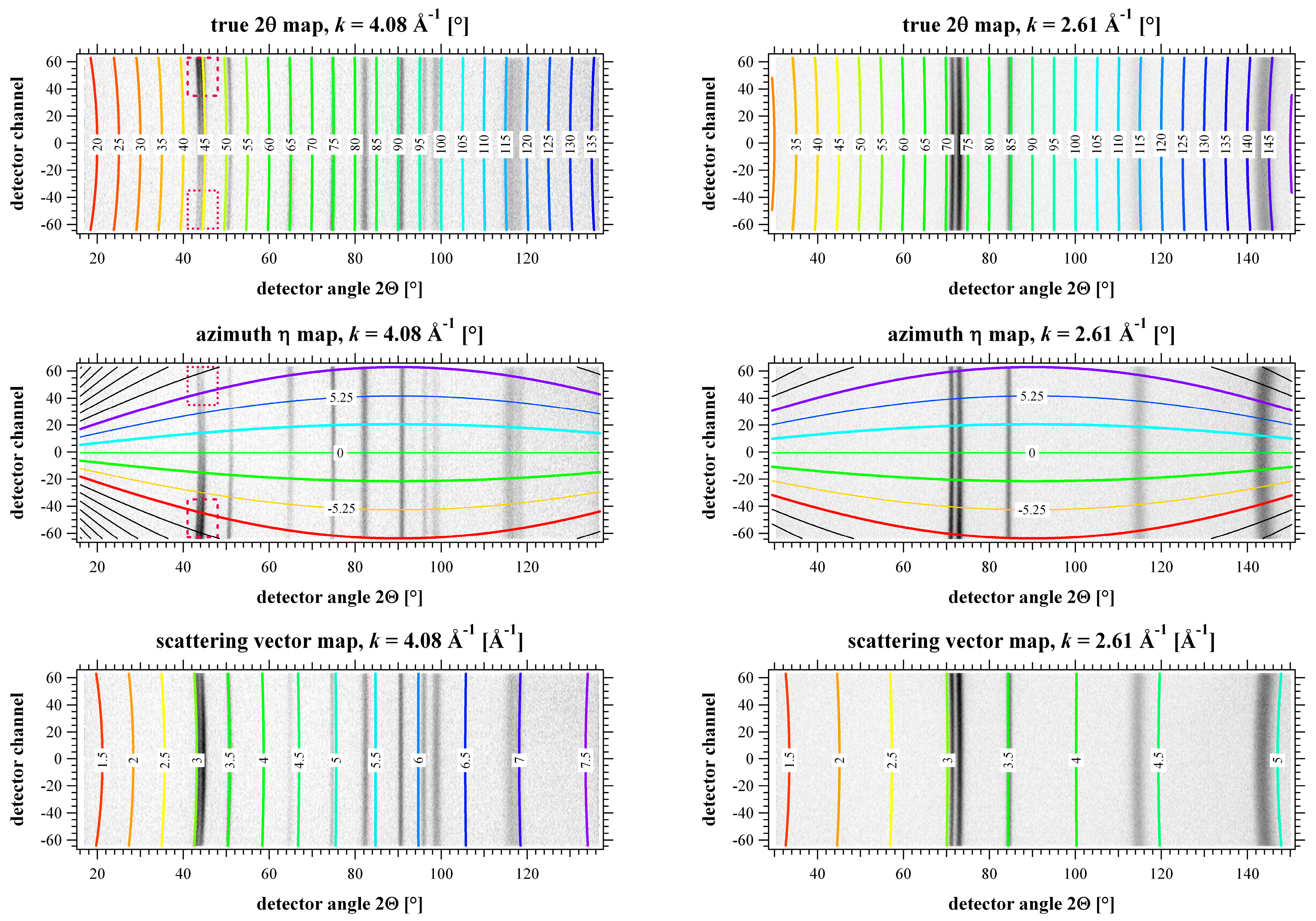




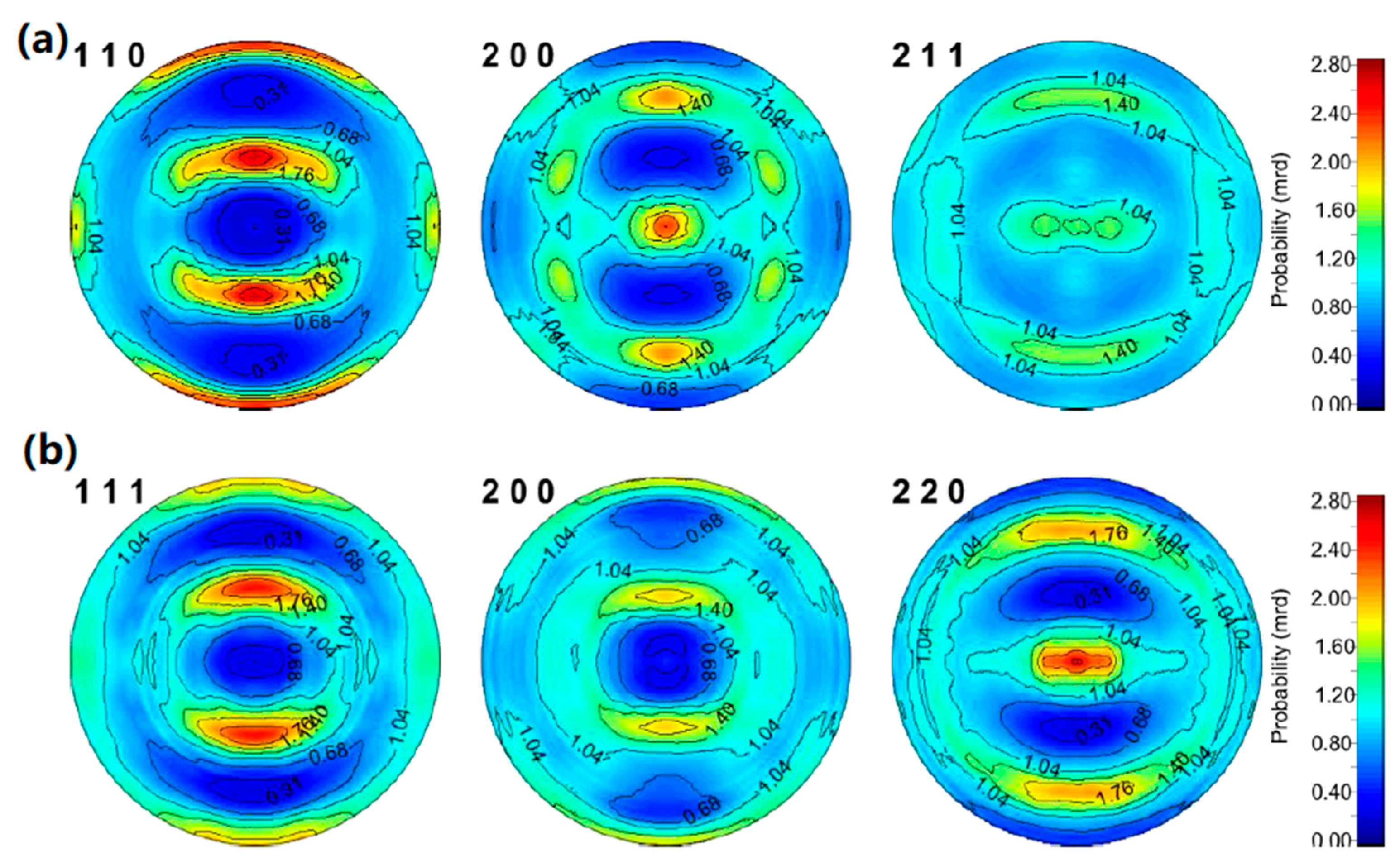
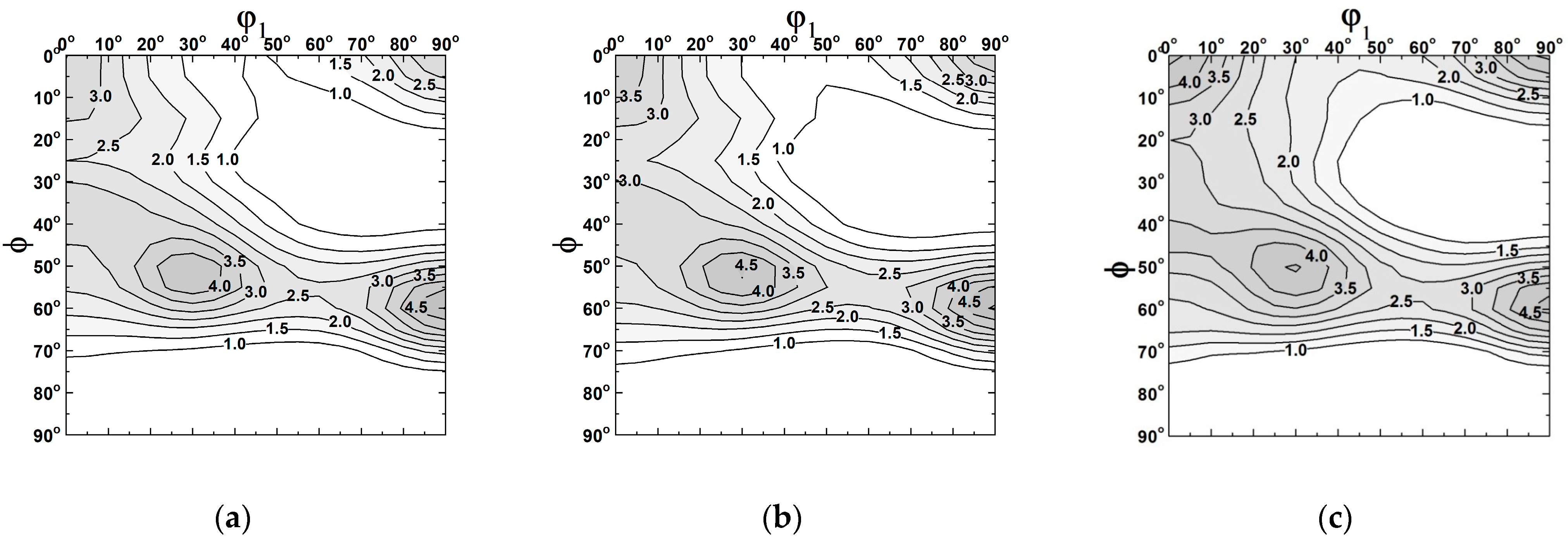
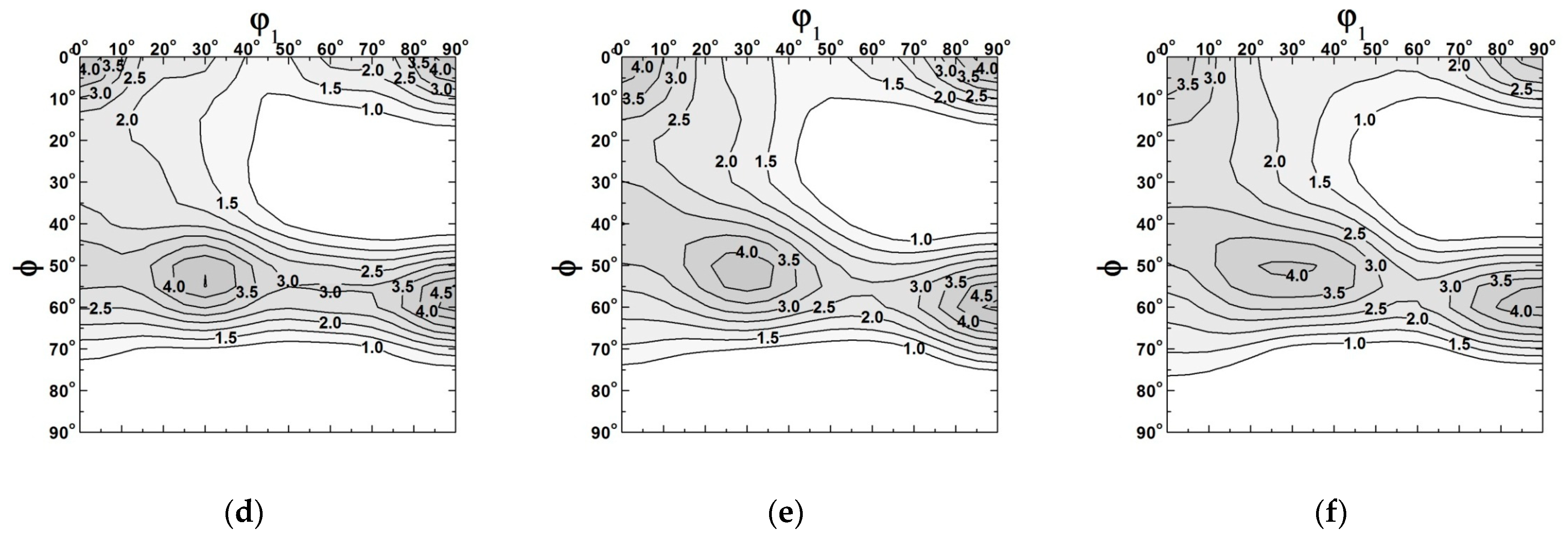
Publisher’s Note: MDPI stays neutral with regard to jurisdictional claims in published maps and institutional affiliations. |
© 2021 by the authors. Licensee MDPI, Basel, Switzerland. This article is an open access article distributed under the terms and conditions of the Creative Commons Attribution (CC BY) license (https://creativecommons.org/licenses/by/4.0/).
Share and Cite
Xu, P.; Liss, K.-D. Multiple Wavelengths Texture Measurement Using Angle Dispersive Neutron Diffraction at WOMBAT. Quantum Beam Sci. 2021, 5, 11. https://doi.org/10.3390/qubs5020011
Xu P, Liss K-D. Multiple Wavelengths Texture Measurement Using Angle Dispersive Neutron Diffraction at WOMBAT. Quantum Beam Science. 2021; 5(2):11. https://doi.org/10.3390/qubs5020011
Chicago/Turabian StyleXu, Pingguang, and Klaus-Dieter Liss. 2021. "Multiple Wavelengths Texture Measurement Using Angle Dispersive Neutron Diffraction at WOMBAT" Quantum Beam Science 5, no. 2: 11. https://doi.org/10.3390/qubs5020011
APA StyleXu, P., & Liss, K.-D. (2021). Multiple Wavelengths Texture Measurement Using Angle Dispersive Neutron Diffraction at WOMBAT. Quantum Beam Science, 5(2), 11. https://doi.org/10.3390/qubs5020011






